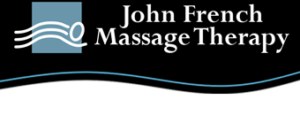What is Neuromuscular Therapy?
The therapist will locate a specific myofascial point, or trigger point, and concentrate treatment in this area by applying continuous pressure for about 30 seconds with fingers, knuckles and elbows. A static pressure is maintained by the massage therapist for the entire time in order to encourage proper blood flow in the area and allow the muscle to return to a healthy tensional state. This is one of the main differences between NMT and Swedish or other forms of massage that use long, stroking techniques.
Typically, painful muscle spasms occur when muscles lack adequate blood flow, or become ischemic. When this occurs, there is a lactic acid buildup in the muscle tissue. Anyone who has worked out will be familiar with this buildup—it’s the cause of that familiar muscle soreness following a strenuous workout. Neuromuscular therapy is applied on the principle that dispersing the lactic acid allows the deficient muscle to begin to accept a clean supply of oxygen and blood flow, and balanced and proper responses in the nervous system through the tissue can be restored.
During your first neuromuscular therapy session, you may be surprised to feel some discomfort during the massage. This is normal and, as the massage therapist adds more pressure to the stroke, the muscle spasm should melt away. The practitioner will tell the client to alert them immediately if the pressure is too painful (e.g., if you have to hold your breath, tap your fingers, or grit your teeth.) The therapist will often check in during the massage to ask if the pressure is too light or too deep and adjust pressure according to the client’s verbal cues. Even with the deeper pressure being used the client can find a lot of stress release and ease of pain from a session.
Often clients will experience some muscle soreness following a neuromuscular therapy massage. However, as with exercise, muscle soreness will disappear within 1-2 days and the body will feel more relaxed for typically about a week or more following the treatment.
Always consult your doctor and your therapist to see if massage or specific massage types are right for you.




